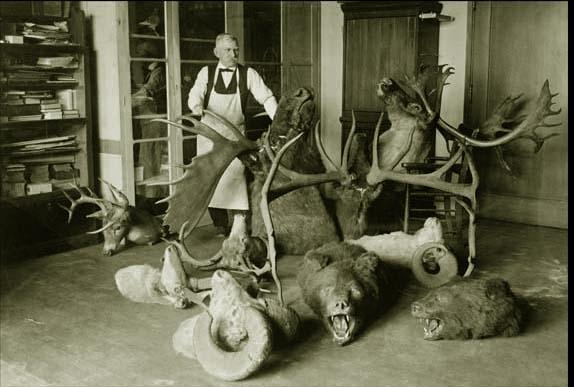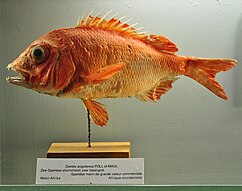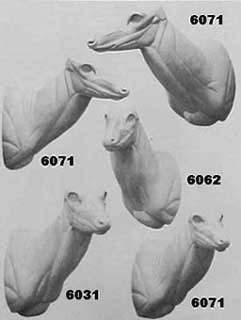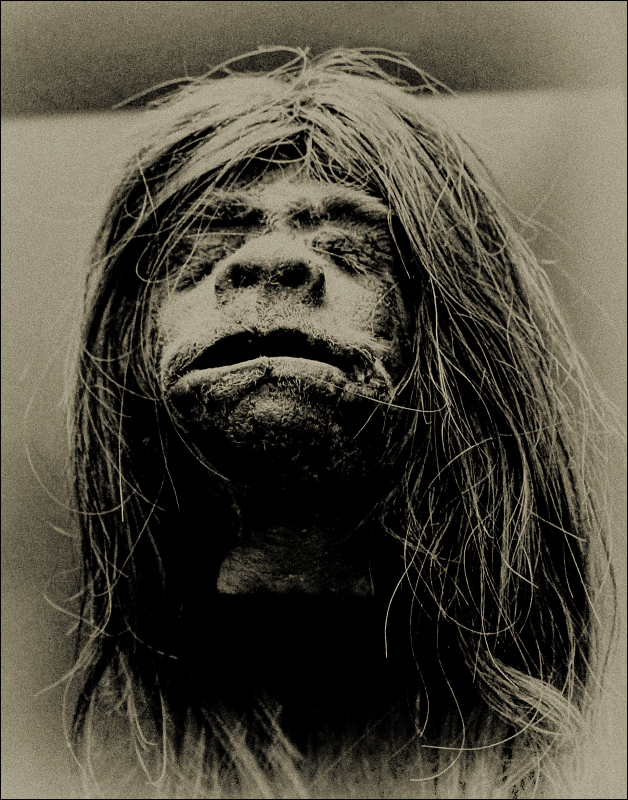A Little Taxidermic History
In determining the origins of taxidermy, there is much dispute amongst historians, hobbyists, and professional taxidermists as to what may be considered a true starting point. If one were to consider taxidermy in relation to skinning animals and tanning hides, then the practice would be of ancient origin. Taxidermy.net, a large online community and database for everything taxidermy related, starts out their history segment by stating that the first taxidermic practices originated amongst hunter and gatherer tribes who formed skins over natural objects to be cured for later use in rituals which eventually lead for the need of professional tanners(taxidermy.net, 2007). Author Pauline Wakeham considers this type of thought problematic in that “stereotypes of skinning and savagery” have aided in reinforcing colonial ideals of primitive native populations and that this origin assumption leads many to ignore that taxidermy was born in the Western World(Wakeham, 2008).Wakeham is critical of this “mythological white fantasy” of primitive life. She relates this ideology to a sort of search or re-examination of the human relationship to nature and considers this idea to lend itself to notions of evolutionary progress in that modern taxidermists are not only part of nature, but are masterful over it(Wakeham, 2008). Karen Wonders notes that taxidermy aims at reanimating life and has the “double-purpose” of being both an artistic and educational endeavour; embalming and tanning seek strictly to preserve(as cited in Wakeham, 2008) a body, skin, or fur with minimal damage control to the flesh being necessary. Both embalming and taxidermy may be used in preparation or preservation of scientific specimens.
The word taxidermy is an etymological derivative of the Greek taxis, meaning “arrangement” or “preparation”, and derma meaning “skin," with the term originally appearing in the Nouveau dictionnaire d'histoire naturelle of 1803-04 with the first known specimen predating the word(Wakeham, 2008). This first recorded attempt at taxidermic preservation was by a Dutch entrepreneur wishing to maintain the integrity of exotic birds from the East Indies that suffocated during transport some 450 years ago, reinforcing the link of taxidermy to colonial powers and exploration(Wakeham, 2008). Taxidermy may therefore be seen as both a form of colonial technology of nature control and one linked to a more primitive life-style, a masculine way to conquer land and “go-native” which aids in naturalizing New World conquest through an imagined and artificial sense of belonging(Wakeham, 2008). Many taxidermic specimens were kept for the sake of curiosity, examples and reminders of the wonders that lie beyond Europe's borders. It was not only a form of showing off animals as curiosities and trophy kills, but also a form of showing off the power and ability to kill. In this sense, taxidermy was for the wealthy. It would not only have been costly to have an animal “stuffed”, but even more costly to acquire exotic animals for collections. Hunting for sport was more of a leisurely past time of the wealthy. Acquired specimens were items to be treasured and objects of pride. After the publication of Linnaeus's Systema Naturae in 1723, North Americans and Europeans developed an even greater affinity for taxidermy collection as a source of knowledge in the realm of natural history studies(Wakeham, 2008).
Collecting was not the only reason taxidermy gained popularity. By the 1800's, hunters started to bring in animals to be sewn up and stuffed in a crude manner which is where the term(s) “stuffing” or “stuffed animal” originate from(taxidermy.net, 2007). The original technique produced many abysmal specimens and gave taxidermy a poor reputation which still haunts the industry(taxidermy.net, 2007). Skins would not have been preserved very well and would have been prone to insect invasion or decomposition if not cleaned and dried well. Many specimens were not prepared to resist attack which made compiling and documenting natural history difficult(Farber, 1977). By the early 20th century, taxidermic practices began to evolve and more closely resemble current practices through the initiative of famous artists like: Carl E. Akeley, William T. Hornaday, Coloman Jonas, and Leon Pray(taxidermy.net, 2007). This lead to the development of more anatomically correct animal forms which included detailed musculature and animals preserved in artistically appealing poses that were more species appropriate, quite different from the traditional snarling figures offered as hunting trophies(taxidermy.net, 2007). During the later part of the 20th century, taxidermy progressed into a “ full-fledged form of wildlife art”(taxidermy.net, 2007). People can now be seen competing in taxidermy competitions and own stand-alone businesses that are solely devoted to providing this preservation service to the public. One such up-coming competition will be held by the Montana Taxidermists Association on March 20-23, 2013, at the Billings Hotel and Convention Center in Billings, Montana(mttaxidermists.com).
A Brief Overview of Mummification
When many people around the World think of mummification, they generally conjure mental images of the famed and well known, bandage wrapped, Egyptian style mummies. Not much is actually known about the mummification techniques used to preserve bodies during Egypt's Old Kingdom reign and the first known report of the the process is thought to have been recorded by the Greek traveller-historian, Herodotus (450 BC)(Saeed, Rufai, &. Elsayed, 2001). Analysis of the mummy “Idu-II”'s(2150[+/-]50BC) fragmented clavicles pieces do however extend the Egyptian history of embalming practices by 1000 years which is much earlier than that previously thought by researchers(Saeed, Rufai, &. Elsayed, 2001). The Egyptian people are also famed for the mummification of animals. Egyptian mummification is indeed the most well known style of preservation but is by no means the oldest form of the practice.
A lesser known form of intentional mummification is that of the Chinchorro culture from South America. Their style of intentional or artificial mummification is the World's oldest and most ancient example of the practice(Guillén, 2004). The Chinchorro society was comprised of sophisticated hunter, gatherer, and fishing peoples which made up a part of the early preceramic Andean culture within the geographic area(Arriaza, Doubrava, Standen, & Haas, 2005). Artificial mummification practices in the region date back to around 6000 BC and began to diminish or taper off amongst the Chinchorro peoples by approximately 2000 BC(Arriaza, Doubrava, Standen, & Haas, 2005). Some scholars who utilize temporal associations consider there to have been an early phase of mummification from 11,000 to 8000 BP, a mid phase from 8000 to 6000 BP, and a late phase occurring between 6000 and 4000 years BP(Guillén, 2004). One interesting aspect is that while cultural practices and styles of preservation changed throughout the years, one aspect remained consistent: within each style of mummification, not all individuals were granted “the full rite of artificial mummification”(Arriaza, Doubrava, Standen, & Haas, 2005).
Another group of people who utilize artificial mummification are the Amazonian Shuar people. For this group, the mummification ritual is not one that typically occurs after a normative or natural death; it is not part of their typical mortuary practices but a ritual practice involving war. These wars generally occur among households far away from one another because of a familial death and are fueled by revenge due to the belief that one has been hexed by the enemy through sorcery causing the death(Jandial,Hughes, Aryan, Marshall, & Levy, 2004). In this context, a household grieving a death is likely a very aggressive one and can aid the “curaka”, a wartime leader, in playing his role which is to organize a group of warriors for vengeance(Jandial,Hughes, Aryan, Marshall, & Levy, 2004). The local shaman is the person who determines the identification of the neighbouring enemy by consuming a liquid called “natéma” which causes him to hallucinate visions of the perpetrator(Jandial,Hughes, Aryan, Marshall, & Levy, 2004). Once all rituals surrounding the “tsantsas” (shrunken heads) have been completed, the trophy head is often discarded or is given to children to play with because its value is lost after having served its purpose(Jandial,Hughes, Aryan, Marshall, & Levy, 2004). This ritual of mummification as a method of revenge greatly sets apart the preservation practices of both the Egyptian and Chinchorro people from that of the Shuar. The Chinchorro and Egyptian people do not simply dispose of their dead after the mummification process has been completed.






No comments:
Post a Comment